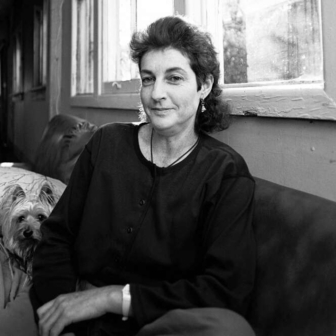Beautiful Balts: From Displaced Persons to New Australians
By Jayne Persian | NewSouth | $39.99
Jayne Persian’s “Beautiful Balts” are the 170,000 displaced persons – usually referred to as DPs – who came to Australia, mainly from Germany, between 1947 and 1952. Their significant numbers reflect the fact that Australia’s postwar reconstruction policies focused on twin imperatives: the need to “populate or perish,” the phrase beloved of immigration minister Arthur Calwell, and the need for a massive labour force of mainly manual workers to undertake the many large-scale projects planned by the federal Labor government. It was assumed that the local population wouldn’t volunteer in sufficient numbers for the necessary hard manual labour.
In the immediate postwar period, Germany had teemed with perhaps twelve million displaced people representing nearly every European country. These were homeless or stateless refugees, discharged military personnel, and other groups of men, women and children forced by the war to leave their homes. Most were eventually repatriated, but around a million people steadfastly refused to go back to countries that had come under Soviet control.
These were the DPs for whom the Australian government competed with Canada, the United States and many other countries. Australia particularly wanted the young, the healthy-looking, the blond and blue-eyed, with single men a priority over women and children. (Hence the irony in the title “Beautiful Balts,” given that the three Baltic states contributed only 35,000 of a 170,000 intake that was largely neither blond nor blue-eyed.) My own family was among the arrivals.
Initially, the fear was that unions and the local working population wouldn’t accept these potential usurpers, or that they might not join the relevant unions. Calwell’s view, however, was that newcomers who looked like Aussies would be more likely to assimilate and eventually be absorbed as “new Australians.”
The plan called for each male DP to undertake a compulsory two-year stint on any government project deemed appropriate. These included nation-building works such as the Snowy Mountains Scheme, water storage dams and reservoirs, and rail, road and other infrastructure projects. They were coupled with the traditionally unpleasant jobs like cane cutting, fruit and vegetable picking, and so on.
During the two-year period, the government housed, fed and provided education and other services to the men and, among those with families, women and children. Standard wages were also paid, in the hope that the new migrants would save adequately for life after their period of indenture. Once “free,” each would (the government hoped) find a job and accommodation and assimilate into the Australian way of life. Job done!
Of course, as the book spells out, it was not as simple or straightforward as that. Persian describes how this first mass immigration unfolded and examines what actually happened – the good, the bad and the sometimes ugly – behind the feel-good messages circulated by the federal government.
The book follows a logical progression from postwar German DP camps to settlement in Australia and concludes by looking at the lives of some of these “new Australians” after their two-year stints. It examines the diverse motives of the people who came to Australia under the program, laying out their hopes, tensions, conflicts, despairs and aspirations, personal and sometimes political. It also provides some insights for today’s migration program.
And yes, there was also love, lust, jealousy and divorce in the camps and barracks. Remember, these people were predominantly between their late teens and early thirties, and there were plenty of single men but far fewer single women. Persian’s informants talk frankly and amusingly about the sexual goings-on around them, especially on weekends when the men were back from their week’s work in distant parts. Clearly, not all the backlogs were on the worksites.
Beautiful Balts emerged largely from a PhD thesis and contains a useful thirty-eight pages of detailed notes and references. That said, it by no means lacks appeal for the non-academic reader. It is eminently readable, brought to life with many direct quotes and illuminating anecdotes from the 300-plus interviews Persian undertook for the project.
Having explored the problems, tensions, fears and conflicts the DPs faced in their early years in Australia, Persian concludes:
Once the indentured period was completed, the main priorities were to find work and permanent housing. Many displaced persons moved to the cities as a matter of personal preference and to chase more congenial or suitable employment.
Many… worked two jobs and saved every penny to afford a deposit on a house or to be able to buy land on which to erect a garage for the family to live in before building a house.
Beautiful Balts is a valuable and, on the whole, balanced account of this period in Australia’s migration program, interwoven with the absorbing story of the author’s relatives and their experiences as displaced persons. But I wonder whether Persian judges the Australian government a little too harshly for not being able to cope with or even cater for every person’s hopes or ambitions in Australia. She cites, for example, the unsympathetic treatment of people from creative and professional classes, which was clearly a source of disillusionment. “For intellectuals, artists, Australia has nothing to give,” one of her informants says, “except food, accommodation and a place as a labourer.”
Precisely. The government had made it quite clear that its prime focus in recruiting non-English speaking migrants was for them to work as manual labourers on government projects for two years. It was not recruiting migrants from the creative or professional classes. The fact that some migrants chose to believe otherwise can’t be blamed on the government.
Yes, 170,000 people from so many different backgrounds arriving during a short period, with no English, most with no extended family or friends, are inevitably going to encounter difficulties. Ultimately, most will thrive – often via their children – though unfortunately a minority will not. This happens among every wave of immigrants. Yet, for all its faults, Australia continues to be a top preference among would-be migrants. •




